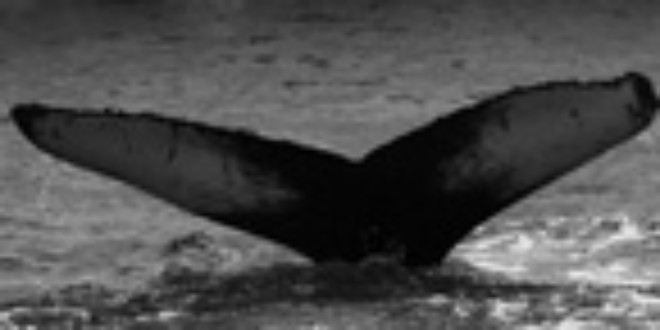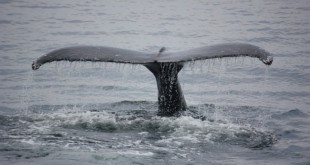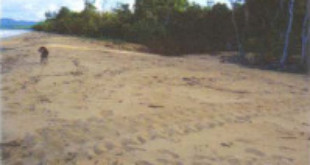Ten Reasons for Concern about the IWC Chair’s suggestions regarding the future of the IWC (the “Plan”)
And for vigorously opposing its adoption at the forthcoming meeting of the IWC in Morocco.
1. It envisages continued whaling in the Southern Ocean Whale Sanctuary;
2. It rejects the Precautionary Principle that was pioneered by the IWC in 1976;
3. It applies ten-year “block quotas”, that were disastrous in the 1970-80s, even for four or six years only;
4. It ignores the consequences of inevitable changes in IWC Membership and/or attendance during the ten “interim” years;
5. It is unfair to ex-whaling countries that accepted the 1982/86 “moratorium”;
6. There are no provisions to enforce or even encourage a ban on or limitation of international trade in commodities from whales;
7. It contemplates authorizing the killing of sperm whales.
8. It undermines the role of international law in conserving and managing the use of living resources of the sea, particularly of the High Seas and Highly Migratory Species;
9. It weakens the IWC;
10. It fails to recognize global changes in public perception of whales and whaling and will encourage actions outside the IWC”s orbit.
Explanation
1. Continued whaling in the SOWS The SOWS was adopted virtually by consensus with the exception of Japan. But even Japan did not lodge an objection to that decision except with respect to the minke whales. It should therefore be entirely unacceptable to authorize any whaling – including Article VIII whaling in the SOWS, and especially not for any other species than the minke.
The Plan envisages Japanese catches in alternate years in the Indian Ocean and Pacific sectors of the SOWS, and at the same time proposes that the South Atlantic be designated as a “real” sanctuary. This has apparently given rise to the idea that the Plan would result at least in one set of Southern Hemisphere baleen whale populations being fully protected. That is not so. Experiments with “Discovery” tags in the years of intensive whaling in the Southern Hemisphere,, and more sophisticated research since, have confirmed two features of whale migrations. One is that whales seen feeding in one ocean sector can be found feeding in another, both in the same season and in later seasons. The second is that whales breeding in the more northerly zones of one ocean may feed in the same sector further south or in another sector. (It is also known that, for example, a humpback whale seen to breed in one part of an ocean sector might breed in another part of the same sector another year; we cannot exclude the possibility that the same whale may even breed in different oceans in successive years. The idea that limitation of Antarctic whaling under the Plan to two ocean sectors will protect a hypothetical group of Atlantic ocean Southern Hemisphere stocks is therefore false.
2. Precautionary Principle This was pioneered in 1976, in furtherance of the New Management Procedure (NMP) – Schedule paragraph 10(b and c). In the first case stocks that are thought to be bigger than 72% of their unexploited number (carrying capacity) – that is 20% more than the “optimum” – shall have zero catch limits until such time as relevant data are available, including especially an estimate of the stock size acceptable to the Scientific Committee Although this was envisaged as mainly a protection of stocks not hitherto exploited, it applies to all Initial Management Stocks (IMS). This provision was enacted even before the UN environment conferences of Rio de Janeiro and Jo’Burg endorsed the PP formally and all participating UN Members accepted it. It is worth noting now that even after nearly thirty years of sightings surveys of minke whales in the southern hemisphere the SC does not have an agreed estimate of their number and its variance. Furthermore, even though other species, such as the depleted fin and blue whales, were observed and counted on those surveys the SC has provided no consolidated and up-to-dateestimates of their numbers and population increase rates.
3. Block quotas An amendment to the NMP provided that if the state of a stock could not properly be assessed, but there was no hard evidence of it declining under continued exploitation with approximately constant catches, it would be classified as a Sustained Management Stock (SMS). In the absence of any positive evidence that it should be otherwise classified”. This presents the burden of proof opposite from that implied by the Precautionary Principle; corrections could be suggested only when there was proof – always controversial, of course – that the stock had been declining. The Schedule does not specify how in such circumstances the catch limit should be calculated and evidently the MSY etc could not be determined as required for SMS stocks. At its best this provision would allow whaling at a presumed sustainable level even if the stock was in fact far below optimum, and in such case would prevent recovery to that level, whatever it might be. It became the practice in such circumstances to set the catch limit at or near the presumed previous constant catch level. Sometimes a so-called “safety factor” was applied; this was always contested but commonly was 10%, that being the safety factor prescribed in the NMP proper.
When it subsequently became clear that in fact some stocks were declining under such a regime (the minke whales in the Northeast Atlantic were an important case in point) it proved difficult, when not impossible, to secure a 3/4 vote to change this rule, and even when secured the change was commonly objected to by the country or countries in question. However, the actual application of the rule had a worse feature. In order to satisfy the whalers’ need for stability and continuity it became customary to set block catch limits, for four or six years. Even though evidence was sometimes obtained showing that the stock was not in fact in equilibrium it became impossible to amend the blocks. Outstanding examples are the minke whales in the North Atlantic, the Spanish and Icelandic fisheries for fin whales, the Iceland fishery for sei whales.
4. Changes in Membership and/or attendance There have in the IWC’s history been two periods of large and decisive change in Membership, also with variable attendance. If meetings are in future held only every two years, and a situation is established whereby decisions will never or rarely be taken, many Members will probably not think it worthwhile to bear the cost of both membership and attendance at meetings. The IWC will be seen for ten years as a mere discussion group. This can only benefit the whaling countries who at least will be generating revenue from their industries to help offset the costs of IWC participation. At the very least it could make impossible – through a blocking 1/4 vote – correction of the suggested ten-year scheme when data become available (and it will once again be in the interests of the whaling countries, as in the past, to try to ensure that definitive data do not become available); in a worse case scenario the non-whaling countries will drop out to the extent that whaling countries with their supporters will be able to control the IWC by holding a simple majority, or even modify the regime in their favour before the five or ten year period is finished.
5. Unfairness Five whaling countries closed their operations as a consequence of the 1982 moratorium decision; Spain, Brazil, Peru, USSR, RoKorea. Also Denmark (Faroes) ceased killing fin whales. It is entirely unreasonable both to reward those countries that continued or resumed whaling for their intransigence and at the same time (illegally) to try to prevent them or any others from joining the resumed industries. The circumstances of some of the decisions made in 1982 are worth recalling. Spain informed the Delegation of Seychelles, the proponents of the successful decision, before the 1982 meeting, that it would vote in favour of the proposal if the delay period could be prolonged from two to three years. That was done, and happened (see below) Similar discussions were held with the whaling company in Brazil. A prior agreement to honour the decision, if taken, was reached, but it was undermined by a message that the Director-General of FAO was against the moratorium and that Brazil should be ready to continue minke whaling. That message was false, promulgated by a dissident FAO staff member, and when the DG publicly disowned it Brazil decided not to object to the decision although it had voted against it.
6 International trade This has always been a factor contrary to efforts to regulate sustainable and responsible whaling. When most baleen whaling was for the production of whale oil for a global market, catch limits were decided on the basis of the economic needs of each pelagic expedition or land station. In the former case, in particular, practically all operators had bank or other loans to repay, with interest, in addition to the running costs of the operations (fuel, wages, ship repairs etc). Statements to this effect by all five of the “pelagic” countries (Japan, Netherlands, USSR, IL, Norway) appear in the Verbatim Records of numerous IWC meetings. Although limits such as the notorious Blue Whale Unit (BWU) numbers for Antarctic baleen whaling were supposedly set in accordance with scientific advice regarding sustainability – at least from 1964 – in practice if the overall catch limit was set too low the countries involved lodged objections if they had failed to undermine a 3/4 vote. Under IWC rules, when one objected they all objected. On occasions when no catch limit could be set countries withdrew from the Commission (Netherlands, Norway) or threatened to do so (Japan).
When the main commodity became frozen meat, almost entirely for the Japanese market, a similar situation prevailed. For example, in the case of Spain, mentioned above, the reason for its insistence on a three-year phase-in of the moratorium instead of the proposed two-years was that the industry had a forward contract with the Japanese meat buyers to provide a certain quantity over a three-year period. This of course determined both the duration of the phase-out and the catch limits to which Spain could agree. Brazil was in a similar situation. (I was personally engaged in negotiations with the Spanish and Brazilian authorities on this matter) We have no reason to suppose that the operations in Chile, Peru, RoKorea and USSR were any different. (In fact, in 1979 Spain had to lodge an objection to the applicable block fin whale catch limit for exactly this reason.)
The very recent revelation that sei whale meat was being served in a restaurant in California shows how easy it still is to engage in international trade when the producers/exporters hold reservations to CITES Appendix I listings, notwithstanding rigorous controls by an importing country. In addition, the current trial of two Greenpeace Japan members in Tokyo has drawn attention to the fact that the flesh of calves (which are taken in Article VIII whaling operations but long prohibited in all other whaling operations) is preferred by gourmet consumers and allegedly figures among “souvenir” deliveries of frozen whale meat by Tokyo’s Institute for Cetacean Research to eminent persons in Japan. It has high value on the Black Market as does the flesh of sei whales’ tails and its availability gives a strong incentive to illegal trade.
General falsification of catch data and the illegal whaling in which Soviet vessels engaged in the 1950s to early ’70s, as revealed by Russian scientists and inspectors after the collapse of the USSR, was done entirely to boost international trade. Statistics of Japan’s coastal whaling in the Northwest Pacific were also falsified, as revealed by Japanese scientists, but that was in the cause of domestic trade.
7. The sperm whale Catching of sperm whales has been banned since 1981/82 and 1982; the ban is not limited to commercial catching (Schedule paragraph 1&) This decision, in 1981 – prior to the general commercial moratorium – was made by consensus and objections have never been lodged to it. It is therefore surprising that the group pf scientists (SEG) that assisted the Chairman’s Support Group (CSG) should have engaged in commenting on a possible catch limit for this species.
8. Undermines international law UNCLOS provides that any exploitation should not only be biologically sustainable but that regulation must aim at optimal high abundance of the exploited resources. It is also explicit that it is entirely legal and where desired proper to prohibit the exploitation of marine mammals.
9. Undermines the IWC When, in 1959, the IWC really was dysfunctional and on the point of collapse certain Members, especially the USA and UK, expressed the view that such collapse of an inter-governmental management organization would trigger, by a sort of domino effect (a concept then current in political affairs) that would impact other such bodies, especially regional and specialized IGOs responsible for fisheries management. The situation is similar today when sea fisheries, globally, are acknowledged to be in crisis, mainly because of over-fishing and stock depletions. A difference is that the IWC’s dysfunctionality has been deliberately cause by the whaling countries, especially by Japan, through resistance to the institution of secure measures for ensuring compliance with rules, long-term abuse of the ICRW’s provisions for taking samples for scientific research, disregarding all Resolutions calling for better behaviour, and what Japan calls its Vote Consolidation Programme
The suggestions of the Chairman and his Support group of a few countries is being touted as a fair deal with gains on both sides, but it is in reality not; it is an appeasement disguised as a compromise searching for a consensus. Furthermore such deception is being assisted by a false dichotomy of views, as between “pro-whalers” and anti-whalers”. The reality is that there is a third position which is in conformity both with the ICRW and the generalities of UNCLOS: that is a view that does not reject whaling in principle but would insist on it being regulated in the public interest, with due attention to the interests of future human generations in all countries, applying the best science but also the Precautionary Principle when the science is inadequate. During the UNCLOS negotiations and outside them there were frequent assertions that the whales were a Common Heritage of Mankind – defined as comprising both present and future generations -, comparable to the mineral resources of the deep-sea bed that were the prime focus of negotiation. Although this was, like the similar perceived status of the Antarctic Continent and the adjacent sea bounded by the 60ºS parallel (which, under the Antarctic Treaty, is protected from mineral exploration and exploitation for fifty years) not incorporated formally into UNCLOS, that remains a strong and widespread public perception with the IWC supposedly its custodian;
10. Encourages activities outside the IWC orbit The Chairman’s and the Support Group’s suggestions are apparently oblivious of the steady changes over several decades of public attitudes to whaling, including in Japan. These have several roots: the growth of whale-watching, the technical advance of wildlife photography, video and underwater observation, the progress of science revealing unforeseen and unique properties of the cetaceans, concern for the welfare of smaller species as well as the great Whales, understanding of the extreme cruelty of the hunting and killing process, knowledge of the changing behaviour of whales with respect to whether or not they are being hunted, and so on.
One factor that should not be ignored is the increasing frustration of those who want either good management – that is, not at the whim of profit seekers – or the end of whaling, as it becomes realized that there is effectively nothing to be done through the IWC to improve matters for at least ten years (given that the conditions set for legitimate change in the interim will be practically impossible to meet). This frustration will likely lead to steady increase in attempts to effect change despite the IWC, from outside it, even questionably illegal ones.
 Ocean Sentry
Ocean Sentry




